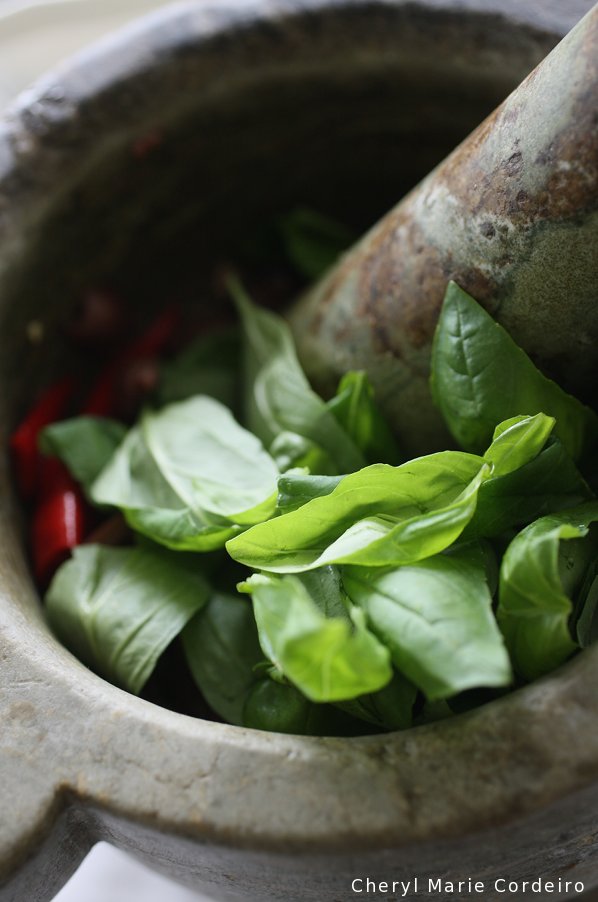From the garden’s basil harvest 2016.
Text & Photo © JE Nilsson, CM Cordeiro, Sweden 2016
When traveling from South of France into Northern Italy it is impossible to not be taken in by the intense flavours of the local herbs and vegetables. It is an overwhelming experience that makes you instantly fall in love with the food.
The nature, the high skies, the imposing Alps just beyond the horizon and the steep cliffs dropping straight into the azure waves of the Northern Mediterranean Sea, all are there to sweep you off your feet and make you never forget what was set in front of you on the tables of the numerous local restaurants you can’t all but resist.
In south of France a nice olive paste and in Italy a similar paste but based on basil were unforgettable additions to any pasta dish or fresh baked breads we had. Often combined with some splendid olive oil, which quality always make the difference between just oil and heaven.
Food tourism, as in bringing your memories back home and integrate your new ideas and inspirations into your daily life is to me a nice way of extending your holidays, ideally all the way until the next.
During a few summer months in Scandinavia the climate shows itself from its very best side, one that might trick anyone from a warmer climate into feeling at home and foolishly start growing things that the winter soon promptly will put a stop to.
Among many failures and overly ambitious garden projects, too numerous to mention here, one surprisingly successful stands out which is – basil. Green and juicy, it grows happily around our house provided proper babysitting is provided in the spring, and much easier, in most any spare window facing south.
Today, while the sun halfheartedly was peeking over some gray clouds in the distance, I felt that the time to harvest a number of our juiciest basil plants had finally come.
Our basil is grown from seeds. The instructions on the back of the packages were clear enough – pinch off the top leaves, and the plant will love you for it. Well, perhaps.
The internet abounds with alternate ways in making a pesto. Pesto actually just means crushed and the word is the origin of pestle. So this is how our own pesto came about, with the addition of a small Asian twist.
One of my favourite choice ingredients are Kalamata olives. So I used that for this spread.
Into our large marble pestle and mortar went – besides those, a few cloves of garlic, replacing the original call for European pine nuts with a generous helping of red chilies with seeds and all, a handful of anchovies, some capers and – a basket full of fresh basil leaves.
Crushing all the ingredients in a mortar instead of blending renders a luscious texture to the pesto that a mixer or blade cutting just does not do. I also find the process of pounding the ingredients soothing as something in-between aroma therapy and a good yoga session.
As a last touch I added a generous measure of ground Parmigiano-Reggiano and a pouring of my favourite olive oil, the Togora limited edition oil, from Lesvos.
Any time we feel for an extra decadent salad dressing, also a food memory for an extra ordinary salad experience, we just stir some of this pesto with some extra olive oil.
Or just drizzle it over a plate of fresh pasta.
The whole process does not take long and is great for both body and soul.
And you can eat the result.
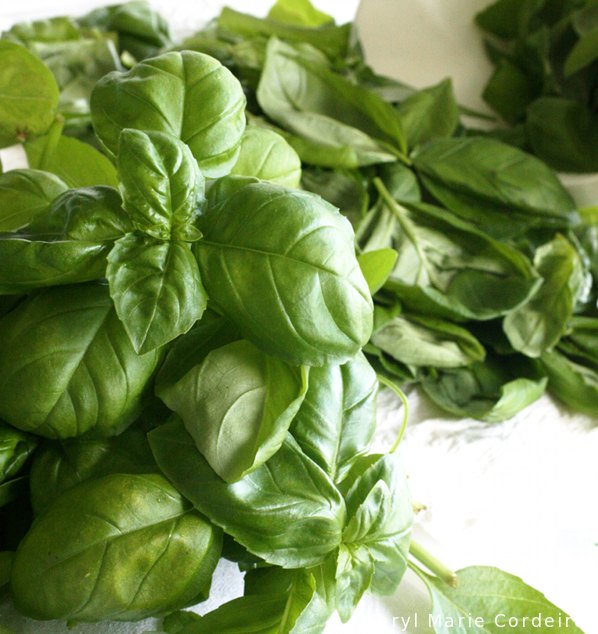
Basil garden harvest 2016
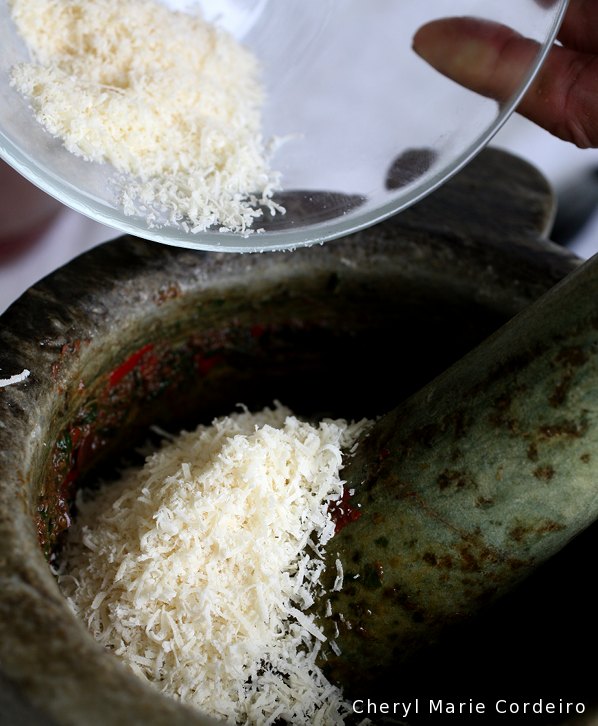
After crushing all ingredients, in goes the grated Parmigiano-Reggiano.
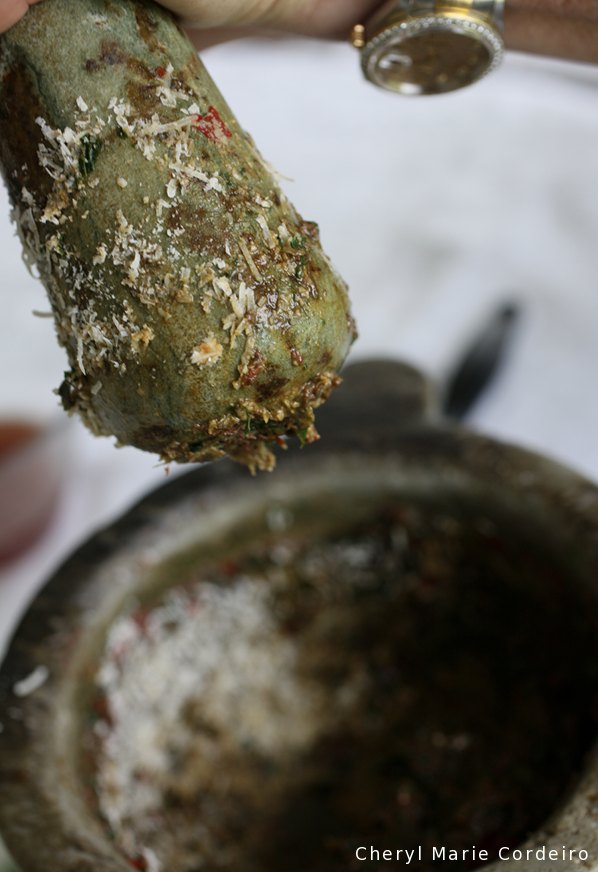
Depending on the amount at task, the grounding and crushing can take between ten minutes to half an hour. So, you’ll have those extra hours to spare anyways.
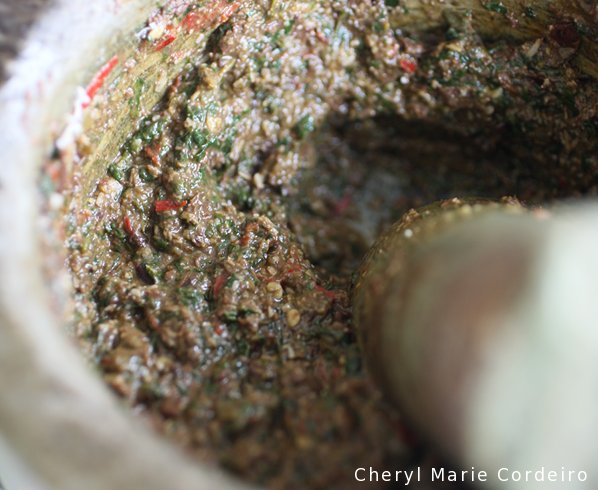
Almost there.
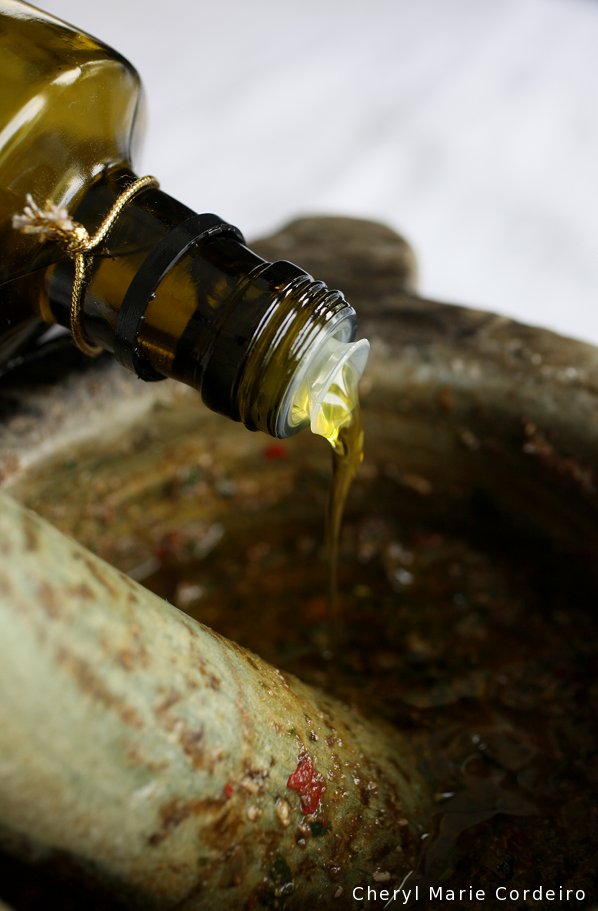
Togora olive oil [1-4], the perfect last thing to add before serving.
References
[1] Cordeiro, C. M. / Nilsson, J. E. 2016. Food with Identity: Passion för Mat 2016, Gothenburg
[2] Cordeiro, C. M. / Nilsson, J. E. 2014. Lambrini Theodossiou, Togora olive oil, Passion för Mat 2014
[3] Cordeiro, C.M. / Nilsson, J.E. 2013. Lesvos olive oil: from the Aegean Islands to the Swedish west coast
[4] Cordeiro, C.M. / Nilsson, J.E. 2013. Sharing our Passion for Food, March 1-3, 2013 Gothenburg
